The Nine Bulgarian Wonders Protected by UNESCO
Rila Monastery
The monastery is situated at 1147 m above sea level amidst beautiful scenery in a hard-to-reach part of Rila Mountain, 117 km south-west of Sofia. Two swift- antechamber flowing rivers- Drushliavitsa and Rilska, flow on either side.
It was founded by the hermit- monk Ioan Rilski and his disciples around 930 AD. Interest in the monastery is rekindled during the Middle Ages, when many Bulgarian tsars and noblemen make generous donations. It has survived many fires and raids. Together with the maintenance buildings, the monastery forms a large architectural complex. It comprises several other chapels, churches and sacred grounds- the Orlitsa nunnery (15th- 19th centuries) - 22 km away, the Pchelino nunnery (late 18th century) - 4 km to the south-west, St Ioan Rilski hermitage is in the north-east, St Lucas hermitage - in the east, and 200 m away- the graveyard church- “Vavedenie Bogorodichno” (1795).
The monastery is supposed to have been established near the cave of the hermit. In the early 14th century it was built at its present location, where there already existed fortified buildings- living premises, a defensive tower and a fortress church. They are associated with the local nobleman- sebastocrator Hrelyu. Hrelyu’s 23-meter-tall tower is the oldest building in the monastery. It has thick stone wall and a chapel on the top floor with preserved 14th century murals.
The monastery was built in several separate stages over the course of 30 years and despite its many creators, boasts architectural and artistic integrity. Two gates- the Dupnishka and the Samokovska- connect it with the outer world. The murals on their facades, walls and vaults stand out against the cold stone outer walls, which are more than four floors high. The outer buildings are painted and their balconies open onto the inner yard. These buildings comprise various premises, the most impressive of which is the Magernitsa- the monastery kitchen. Its massive tower goes up through all four floors and finishes with a dome on the roof. The guest-rooms are furnished with donations from wealthy Bulgarian settlements, and are decorated with paintings, woodcarving and textile from the respective region (the Koprivshtenska, Kyustendilska and other guest-rooms). The richly decorated “Mother of God” church was built in the yard in 1837. It has three auditoria, five domes, no narthex, two side chapels and an open gallery. The murals on its walls present 1200 scenes and images, the altar iconostasis has tracery woodcarving and is entirely covered with gold leaf. The relics of St Ioan Rilski are kept in the church.
Bulgarian spiritual and material culture is preserved in the monastery in the form of various works of Bulgarian art with high artistic value. The icon collection spans the 14th- 19th centuries and shows the development of the craft over time. The oldest icon- St Ioan Rilski, is dated 14th century. Some of the oldest woodcarvings in the land are also preserved there. Exhibits of great value and interest are the gates of the old church from the time of Hrelyu, and the 18th century Rafail Cross. The latter was carved over the course of 12 years and its 43x81 cm show 104 scenes and 650 miniature figures. The monastery’s important cultural role is also due to its rich library of various literary works.
The Rila Monastery is the second largest on the Balkan Peninsula. Some of the best Bulgarian craftsmen of the time took part in building it.
The Rila Monastery was included in the World Cultural and Natural Heritage List at the World Cultural and Natural Heritage Committee session of 1983 in Florence, Italy .
Boyana Church
The church of Boyana is situated in Boyana – a suburb of Sofia. It consists of three parts built in three stages. The first stage was in the end of the 10th century and in the beginning of the 11th century. The second one was in the middle of the 13th century and the last one – in the middle of the 19th century.
The construction of the first cross-shaped part was connected with the Boyana fortress which exited at that time. The temple was built of bricks and is a small almost cubic cross-shaped building. During the 13th century the old temple was widened with the building of the two-storied second part at the west side of the church. It has a dome of a church-tomb type. There are two niches on the down floor, where the church donors sebastocrator Kaloyan and his wife Desislava, who were ruling Sofia district during this period, should have been buried.
The second floor was approached through a door on the southern façade with several steps under it, which didn’t reach the terrain. Probably a step-ladder served as an extra connection and its removal turned the family chapel into a defensive facility. The second part was built of stones and bricks, and its façade has ceramic decoration. The third part of the church was built during the Bulgarian Revival with funds donated by local people and it serves as a narthex. It doesn’t have any special architectural and artistic value.
The importance of the church of Boyana as a cultural monument is mostly due to its superb frescoes. Very little has survived from the frescoes of the first church. When the second part was built, the two connected buildings were completely repainted. The painter’s name is not known and he is simply called the Boyana master. The pictures are realistic and vivid. The face of Jesus Christ, traditional scenes from the Bible, figures of saints were painted in the second church. There are life-size portraits of the sebastocrator’s and the royal couples. The portraits of Kaloyan and his wife Desislava are the oldest ones in Bulgarian art which have been drawn from nature. They are wearing official clothing, the face of Kaloyan is sophisticated and noble and Desislava is thought to be the most beautiful female face from her time. Kaloyan presents Saint Nikola, painted next to him, with a model of the church, which was devoted to the saint. The chapel on the second floor is devoted to Saint Panteleymon. King Constantine and his wife Irina are wearing crowns and brocaded clothing. The King holds a sceptre in his hands.
The frescoes of Boyana from 1259 have a high artistic qualities and undisputable contribution to the European art culture. They also have historical and documentary value.
The Boyana Churchwas included in the World Cultural and Natural Heritage List at the World Cultural and Natural Heritage Committee session of 1979 in Luxor, Egypt .
Rock-hewn Churches of Ivanovo
They are situated 20 km south of Rousse, on the high rocky banks of the Russesnski Lom, near the village of Ivanovo. Some of them are up to 36 m above the river. They form a monastery complex comprising about 20 medieval churches, chapels and cells with uncovered traces of more than 300 rooms. The churches are small, 20- 30 square metres in size. They were inhabited during the 11- 14 centuries by monks, many of whom bookmans and grammarians. Rich cultural and spiritual life is believed to have flourished there during the Second Bulgarian Kingdom. Many believers came on pilgrimage there. Kings and noblemen sent hewers to carve new churches in the rocks, and painters to draw holy images. The Bulgarian patriarch Ioakim retired there from the capital city of Turnovgrad. Tsar Georgi Terter is believed to have spent the final years of his life there.
A large part of the rock temples have been destroyed under the influence of earthquakes, rain, ice, and sun. The names of the surviving Ivanovo Rock Churches have been forgotten over the centuries and the local population has given them new ones according to its own custom: “Gospodev dol” (God’s glen) where the image of Christ can be seen through a rock opening in one of the churches; the area “Pismata” (“The writings”) - for the signs and inscriptions preserved there. One church was called “Zatrupanata” (“The Buried One”), and another one, simply- “The Church” (“Zarkvata”).
The church walls are covered with murals from various ages. In the Buried Church there is a portrait of Tsar Ivan Assen II, the church-donor, holding a miniature model of the church. “The church”, whose donor was Tsar Ivan- Alexander (1331- 1371), has the most interesting murals. It comprises a narthex and a naos, with unique Turnovo and Tzarigrad 14th century style murals. They are characterized by a great expressiveness and a dramatic rendition of the sufferings of Christ. All the participants in the mass scenes are moving, gesturing and representing the atmosphere of tragedy and doom.
The Rock-hewn Churches of Ivanovo was included in the World Cultural and Natural Heritage List at the World Cultural and Natural Heritage Committee session of 1979 in Luxor, Egypt .
Sreburna Nature Reserve
The biosphere reserve is situated near the village of Sreburna, 18 km west of Silistra and 2 km south of the Danube. It includes Lake Sreburna and the surrounding territory, covering an area of 600 ha.
The depth of the lake varies between 1 and 3 m. The whole lake is covered with rushes and other water-loving plants. There are 67 higher plant species, some of which are rare in Europe. Some examples are the water lily, the swamp snowdrop, the swamp violet, bulrushes and reeds.
Almost half of Bulgaria’s bird species nest in the reserve. There are around 100 local species, 221 together with the passing and feeding ones. There are a great number of rare and precious representatives of the national and world genetic fund: water birds, curly-headed pelican, wild geese, ibises, herons, wild ducks etc. The colony of the curly-headed pelican is the only one in Bulgaria. The lake’s uniqueness is due to its position as a main stopover on the so-called Via Pontica, the most important migration route of migratory birds between Northern Europe and central Africa.
39 species of mammals inhabit the shores and small islands of Sreburna- little polecats, various mice etc. There are 21 species of amphibians and reptiles- tortoises, otters, lake crab, water rat, water snakes, tritons etc. One can also encounter the green frog- one of the world’s species which is fast becoming extinct. There are about ten species of fish, including pike, red-fin, etc.
The lake was declared a protected territory in 1948, and the cutting of the rushes and disturbance of the birds was prohibited. Because of its great variety of birds and the favourable conditions for its preservation, Lake Sreburna was included in the Ramsar Convention for the Preservation of Moisture Zones of International Significance.
The Srebarna Nature Reservewas included in the World Cultural and Natural Heritage List at the World Cultural and Natural Heritage Committee session of 1983 in Florence, Italy .
Pirin National Park
The natural reserve encompasses the larger part of the P i rin mountain in the south-west of Bulgaria. The protected territory covers about 26, 000 ha. The Thracians called the mountain Orbellus (“Snow Mountain”), and the Slavs associated it with their god of storm and thunder Perun, hence the present-day name. According its geological structure, Pyrin is a horst with a granite core, covered mainly with old metamorphic rock. The mountain was formed in the middle of the Tertiary. At the beginning of the Quaternary the rising of the mountain coincides with its icing. Many circus lakes (176; Bandersihki, Popovi etc), glacier valleys, moraines etc were formed then. Above 2, 300 m there is a constant snow-cap. The mountain has Alpine relief and mountain climate, with Mediterranean influence along the valleys of the rivers Struma and Mesta. Vihren (2,914 m) is the highest among the 61 peaks above 2, 500 m. There are many rivers and streams, the sources of the rivers Banderishka, Demianitsa, Sandanska Bistritsa etc, and more than 70 thermal springs.
Forests cover more than half the area of the mountain and comprise all coniferous species of Bulgaria, as well as many deciduous. The white and black furs are an example, the Baykusheva fur being the oldest known tree. It is around 1, 300 years old, 16 m high and has a circumference of 5.72 m. All trees more than 280 years of age have been declared natural phenomena. Plants characteristic of the height above 2, 000 m. are: pine-scrub, Siberian juniper, heath-berry, the spotted gentian, etc. At greater heights, Pyrin poppy, edelweiss and willow can be found.
Rare animal species inhabiting Pyrin include wild goats, wild cats, deer, boar, wolves, bears, foxes, martens, squirrels, and rare birds, among which the almost-extinct wood-grouse. There is a great variety of butterflies. Endangered species include the Greek turtle, the speckled polecat, the brown bear, the wild cat, the wild goat, the rock eagle, the wood-grouse, the owl, the speckled woodpecker, etc.
113 species of the park’s flora and fauna are included in the Red Book. In order to provide protection for the unique variety of landscape, plant and animal species.
The Pirin National Parkwas included in the World Cultural and Natural Heritage List at the World Cultural and Natural Heritage Committee session of 1983 in Florence, Italy
Madara Rider
It is in the north-east of Bulgaria, 20 km from the town of Shumen, near the village of Madara. The relief was cut in a vertical rock at 23 m height during the 8th century. It measures 2.6 m in height and is 3.1 wide at the base. The relief comprises a life-size horseman, a lion, a dog, and Greek inscriptions. The horseman is wearing a knee-length garment and is holding the reigns in his left hand. With the right hand, he has thrown a short spear with a flag at the lion lying at the horse’s front legs. The high back of a saddle is visible behind the horseman. The man’s right foot is thrust in a stirrup. The dog is running behind the horse. The image is believed to show the victorious khan Tervel. It carries resemblance to the scenes of triumph in the Iran’s east and the artistic traditions of antiquity. The details of the relief make likely its Proto-Bulgarian origin. The proto-Bulgarian inscriptions, written in Greek, announce events in Bulgarian-Byzantine relations under the rule of the khans Tervel, Khormisosh, and Omurtag during the 8th and 9th centuries. One of the inscriptions presents the forceful abdication and the exile of the Byzantine emperor Justinian in 705. Having managed to escape, Justinian sought help from the Bulgarians. Khan Tervel and his army helped him to recover the throne of Byzantium. In return, Tervel received honours and gifts, and recognition of the title of Caesar- Tsar, as well as land south of Hemus and an annual tax from Byzantium.
The Madara horseman is a part of the national history and archaeology reserve of Madara. It was once connected with the large worship complex of heathen temples, palaces and houses, and other premises, built by khan Omurtag on the Madara rock terrace. At the rock base, there is also a large cave called the Nymphs’ Cave, where the Thracians worshiped their deities in ancient times. Scientist have found many prehistoric cult figures and tablets dedicated to the three local nymphs, Zeus, Heracles, Dionysius, Cibbela, the Thracian horseman-hero Heros, etc.
The Madara horseman is the only rock relief in Europe dated back to the early Middle Ages.
The Madara Rider was included in the World Cultural and Natural Heritage List at the World Cultural and Natural Heritage Committee session of 1979 in Luxor, Egypt .
Thracian tomb of Kazanlak
The tomb, situated in a mound near the town of Kazanluk, was discovered by accident in 1944. Up to then, the burial mound had been considered a natural elevation of the ground.
The tomb, dated late 4th century B.C., is believed to have been constructed for a Tracian nobleman and a close associate of Seft – King of the Odrisses. It comprises three chambers: a rectangular antechamber connected via a long, narrow passage, with a round burial chamber. The chamber is covered with a conical dome and is decorated with ornamental and figural frescoes. Battle scenes are shown in the passage. Two tribal armies are fighting on one side; on the other, two warriors- presumably the chieftains- are engaged in personal combat in front of the armies. Two friezes are painted on the dome walls. The upper one shows three racing chariots and the lower one- a burial feast and procession. In the latter scene, the nobleman and Seft his wife are the focus of attention. The man is sitting on a throne, with a laurel burial wreath on his head, his beautiful wife sitting opposite him. On either side, they are approached by relatives, musicians with trumpets, and servants with fruit, perfume oils, jewelry, and a cloak. At the end of the procession, warriors are bringing a four-horse chariot and the personal horse of their deceased master.
The tomb was robbed in antiquity, when the door and the antechamber were forced open. All expensive objects, traditionally accompanying the defunct, were stolen- gold and silver vessels, jewelry, and horse and chariot munitions. Only a Thracian knife and an iron spearhead were found on the floor of the passage. When the dirt was sieved, 140 minute hemispherical buttons and gold-plated earthen flowers were found, probably a part of the decorations of an expensive woman’s garment.
The Kazanluk tomb is a rare example of the architectural craft of the Thracians and the art of painting during the Hellenistic age. It is the oldest one in Europe, and the only one with preserved frescoes.
The Thracian tomb of Kazanlak was included in the World Cultural and Natural Heritage List at the World Cultural and Natural Heritage Committee session of 1979 in Luxor, Egypt .
Thracian tomb of Sveshtari
It is situated 2.5 km south-west of the village of Sveshtari, 42 km north-east of Razgrad, in the north-east of Bulgaria. It was discovered in 1982 during the excavation of the high Glinina mound near the village. It is a Thracian-Hellenistic tomb from the first half of the 3rd century BC. The Getic ruler Drumihed was probably buried in this royal tomb. The construction, built of smooth-cut soft limestone blocks, consists of a passage and three square chambers (a narthex, a side room, and a burial chamber), covered with a semi- cylindrical vault. The entrance is decorated with pillars with Ionian capitals. On them lies a slate with a relief-decorated freeze of ox heads, rosettes, and garlands. Gifts and sacrificial offerings were probably left beside the entrance. All objects made of precious metals have been stolen in antiquity. The riches originally laid in the tomb can be inferred from the bones of five horses, slain to accompany their master in the afterlife. Two stone beds, human bones and burial gifts have been found in the chamber. Near on bed is a miniature temple façade, implying the recent sanctification of the deceased ruler. The sanctification ritual is pictured on the semi- cylindrical wall under the vault of the chamber. It portrays the ruler on horseback with two armour-bearers behind him, and faced by the goddess who is handing him a gold wreath, followed by four women with gifts. The walls of the chamber are shaped as a colonnade. The blocks under the vault are also supported by ten 1.2 m high caryatids with raised arms. They are wearing long finely plaited sleeveless garments, with a belt under the breasts. The edge of the garments has a large hem and is shaped as a flower. Their curly hair falls over the shoulders, covered on the crown of the head with a peculiar basket called calathos. The hair, faces and clothes were coloured, judging by the traces of dark brown paint. The statues of the caryatids, the scene painted under the vault indicate that neither the sculptors nor the painters were able to finish their work. The arms of some caryatids were carved roughly, and the drawing was just outlined with black chalk. The same details imply that the ruler for whom the tomb was meant died suddenly.
The tomb excavated at Sveshtari is not a solitary construction. 26 other tombs of various sizes have been preserved along a 2 km stripe. The whole region has been declared an archaeological reserve.
The Thracian tomb of Sveshtari was included in the World Cultural and Natural Heritage List at the World Cultural and Natural Heritage Committee session of 1985 in Paris, France .
Ancient City of Nessebar
The old town of Nessebur is situated on a small Black Sea peninsula, and is connected to the land via a narrow isthmus.
It was first inhabited in the Bronze Age, when the neck of land was barricaded in the event of danger. The first Thracian settlement, Messembria, was built around 2000 BC. Greek colonists settled there in the 6th century BC. The town started to decline after its seizure by a Roman garrison in 72 BC. Later it passes under Greek rule again and becomes an important maritime base. Greek and Bulgarian rule alternated until the second Bulgarian Kingdom, when the town became an important centre of the state under tsar Ivan-Alexander (1331- 1371). Hundreds of anchors, taken out of its coastal waters, demonstrate its importance as a commercial port. Excavations have uncovered precious and exquisite objects, as well as inscriptions, sculptures and decorations which speak of the town’s structure, cultural institutions and temples. Its significance hadn’t dwindled during the times of Roman and Byzantine rule.
The establishment of Christianity as a state religion during the 4th century changes the town considerably. The largest early Christian church- The Old Bishopric –still survives. The churches, 41 according to some sources, were built by Bulgarians and Byzantines alike. Only a few survive- The Old Bishopric and parts of “Eleusa Mother of God” (both 6th century basilicas), St Stephan (12th century), St Todor (13th century), Pantokrator (14th century), St Ivan the Unsanctified, St John the Baptist, etc.
In 1336, the crusaders of prince Amedeus VI of Savoy invaded the town, tempted by its riches. In 1453 Nessebur falls under Turkish rule. Trade and fishing became the main occupations. The old Nessebur houses, which the town is now famous for, evolved at that time. The lower floor of a typical house is built of stone, and the second – of wood planks, with bow-window hanging above the narrow cobbled streets. Many of the buildings have now been restored and declared cultural monuments, along with the old fortress wall and gate. The latter is part of the oldest local fortress. The city has been declared a museum-town.
The Ancient City of Nessebar was included in the World Cultural and Natural Heritage List at the World Cultural and Natural Heritage Committee session of 1983 in Florence, Italy .
Bulgarian Horizon
Arizona
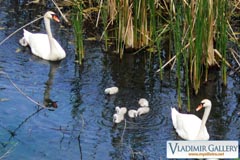
Sreburna Nature Reserve
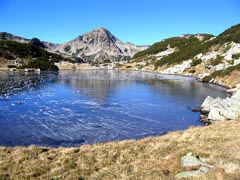
Pirin National Park
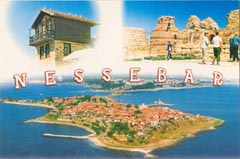
Ancient City of Nessebar
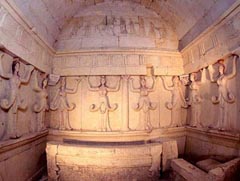
Thracian tomb of Kazanlak
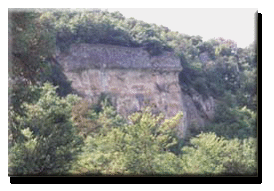
Thracian tomb of Sveshtari
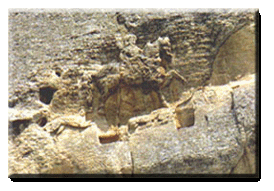
Madara Rider
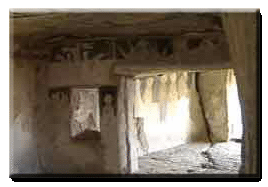
Rock-hewn Churches of Ivanovo
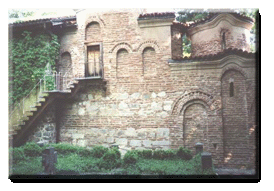
Boyana Church
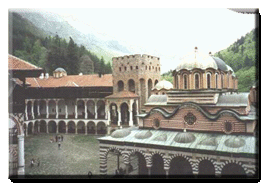
Rila Monastery
